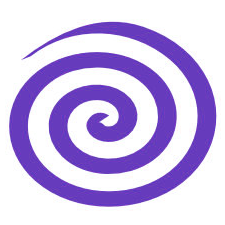Division of Pain By Cheryl Becker, GCFP
The Milton H. Erickson Foundation Newletter Case Report
VOL. 41, NO. 1
Division of Pain
By Cheryl Becker, GCFP
I am not sure how old I was when I learned fractions and division, but I know that I was very young because my little sister and I were sleeping in the same bed. My father had not yet finished building our separate bedrooms in the attic. By that time, my sister and I already had a lot of experience dividing things between the two of us.
Almost year-round my sister and I enjoyed running around outdoors. One day I hurt my foot, although I do not recall how it happened. But I do vividly remem- ber the pain; my big toe hurt so much I could barely sleep. As I struggled with its throbbing, my sister slept soundly next to me.
As I tossed and turned, it occurred to me that if I could divide the pain in two, I could bear it more easily. So, I attempted to transfer half the pain into my other big toe, and it worked! Then I thought, “Why not divide it again?” I doled out half the pain from my toes into my thumbs. I got so carried away with my success that I kept dividing the pain until eventually I no longer had any pain anywhere. Thrilled, I jostled my sister. “Wake up! I just invented something!” (Invention must be in my blood as my father was an amateur inventor.) I told her what I did and de- clared, “I’m going to call it ‘Division of Pain’!”
She looked at me still sleepy and said, “You’re crazy.” Then she turned over and went back to sleep. I thought to myself, “I don’t care what you say. This is very important.”
Ever since my childhood discovery that pain can be divided, it became just an ordinary tool that I have used from time to time—like people would use a Band- Aid—especially if I happen to hurt a toe. For example, my right big toe took some
straight-on “hits” in Argentine tango dancing while I was learning to “follow.” So, I divided the pain once again step by step.
Pain has led me to attempt self-healing and teach self-healing several times, with mixed success. Belief in the process has a lot to do with it, and as Kay Thompson maintained, motivation is critical. Once, my 5-year-old neighbor came to me crying with a scraped knee. I told her matter-of-factly, “Well, just put your hands over it and heal it.” The next day she ran over to me excited and happy to show me her overnight success. I was amazed to see that her wound was almost healed.
Later, on two separate occasions, I was highly motivated to heal some benign tumors when I was facing the prospect of surgery without health insurance. Both times the tumors reduced in size and one eventually completely dissolved. Appar- ently, the treatments of an Oriental Medical Doctor (OMD) using “Sugi,” or energy did the trick. The OMD had convinced me that the body can heal itself, if given the opportunity. I surmise that he did for me what I did for the 5-year-old girl.
Especially in the case of pain and illness, if something works, why not use it?
Commentary
By Eric Greenlead, PhD
Cheryl Becker, an experienced Feldenkrais PractitionerCM, knows movement inside out. Like Milton Erickson or Kay Thompson, she was prompted by painful circumstances to do something to make her body feel better. So, she utilized math, specifically division, as Erickson did in his own pain reduction methods, and be- came convinced of its success. As Erickson said, “To initiate this kind of therapy you have to be yourself as a person...you have to do it your own way.” And, as Moshe Feldenkrais said, “You only have to be your own self.”
